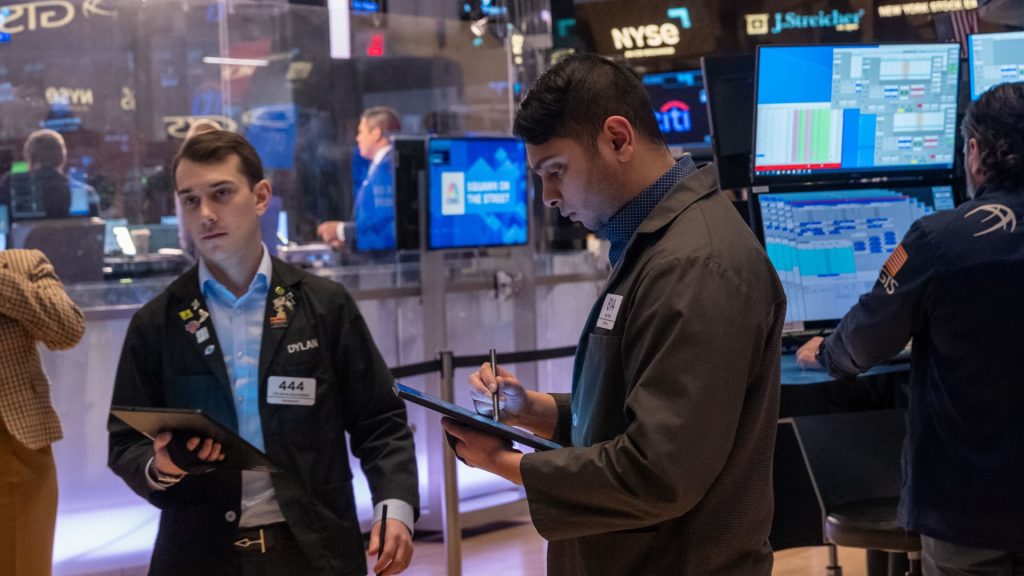In a recent analysis of the stock market’s stability in light of tariff policies, Mandy Xu of CBOE Global Markets has raised concerns that the market might be underestimating the risks associated with tariffs. Following a significant sell-off, Xu highlights that while stock markets may still be sorting through the impacts of these tariffs, the bond market appears to reflect a growing apprehension about potential economic downturns. This warning comes as the economic landscape faces uncertainties largely driven by policy changes and government actions.
| Article Subheadings |
|---|
| 1) Insights from the Stock Market’s Performance |
| 2) Tariff Policies Announced by the U.S. Government |
| 3) The Bond Market’s Response to Economic Signals |
| 4) Economic Growth Concerns Amid Tariff Implementation |
| 5) Anticipating Future Economic Trends |
Insights from the Stock Market’s Performance
The stock market demonstrated volatile behavior following Monday’s sell-off, which saw a spike in the CBOE Volatility Index (often referred to as the “fear gauge”) by 16%, reaching a value of 22.78. This increase came as the S&P 500 index fell below the starting point for the year, indicating a broader lack of confidence among investors. The Nasdaq Composite also saw significant declines, falling over 9% from its recent highs and nearing correction territory. Mandy Xu explained that this volatility indicates a fundamental uncertainty as traders regroup and reassess their positions in light of ongoing tariff discussions and their potential implications.
Tariff Policies Announced by the U.S. Government
On Tuesday, President Donald Trump announced that the U.S. would introduce new tariffs, imposing a 25% duty on imports from Canada and Mexico. Additionally, a 10% tariff is set to affect imports from China. These decisions are part of the administration’s broader strategy to renegotiate trade deals and exert pressure on trade partners.
“The new tariffs are intended to protect American industries and jobs,”
noted a government spokesperson. The impact of these tariffs on businesses and consumers remains to be seen, but early indicators point to increased market volatility and concern for potential price hikes in consumer goods.
The Bond Market’s Response to Economic Signals
Xu pointed out that the bond market has been reacting more sensitively to economic uncertainties compared to the stock market. Historically, bond prices tend to rise when investors seek safety, and yields fall corresponds with fears of an economic slowdown. Recently, signals from the bond market suggest that the outlook for growth might be dimming, with warnings of potential recessionary conditions. This divergence between the stock and bond markets is crucial, as it indicates that while equities may be somewhat insulated from immediate concerns, the underlying economic fundamentals are weakening. Investors are encouraged to watch carefully as signals from the bond market could foreshadow more significant financial challenges ahead.
Economic Growth Concerns Amid Tariff Implementation
The economic implications of the tariff policies, paired with reductions in the federal workforce, have raised alarms about a potential demand shock in consumer spending. Xu commented on the importance of monitoring consumer behavior closely, given that federal layoffs coincide with these trade policies.
“This is happening at the same time we’re seeing large-scale reductions in the federal workforce,”
she stated, emphasizing the unpredictable nature of consumer response to reduced federal income and economic uncertainty. As economic data is released, such as the upcoming February employment report from the U.S. Bureau of Labor Statistics, analysts are closely watching these figures to gauge their impact on consumer confidence and spending.
Anticipating Future Economic Trends
With both market volatility and governmental policies still in flux, observers are left contemplating the trajectory of the U.S. economy. Mandy Xu remarked on the elevated level of hedging activity in the options market, which indicates that investors are preparing for more turbulence. The volume of options trading reached record levels as market participants seek ways to mitigate risks associated with sudden policy changes. This proactive approach may help stabilize capital markets, but the uncertainty surrounding trade policies and their potential impacts looms large. Observers suggest the upcoming months will be critical for assessing whether the U.S. economy can weather these turbulent conditions successfully.
| No. | Key Points |
|---|---|
| 1 | CBOE Global Markets’ Mandy Xu warns that the stock market is underpricing tariff risks. |
| 2 | President Donald Trump’s newly announced tariffs are aimed at imports from Canada, Mexico, and China. |
| 3 | The bond market appears to reflect greater concern about economic growth than the stock market. |
| 4 | Potential demand shocks are a concern due to federal layoffs coinciding with tariff announcements. |
| 5 | Market participants are increasingly hedging against potential risks, raising record levels in options trading. |
Summary
The warnings from Mandy Xu regarding the current state of the stock and bond markets highlight a growing concern about economic stability as trade policies evolve. As the U.S. embarks on implementing significant tariffs, the immediate financial implications are evolving for both investors and consumers. The potential for consumer demand to falter amid government workforce reductions calls for careful monitoring of economic indicators. As market volatility escalates, understanding these dynamics will be essential for stakeholders moving forward.
Frequently Asked Questions
Question: What are the main concerns regarding the recent tariff announcements?
The main concerns revolve around potential impacts on consumer prices, economic growth, and investor sentiment. The tariffs may lead to higher costs for imported goods, affecting spending patterns and subsequently the overall economy.
Question: How has the bond market reacted to recent economic events?
The bond market has shown increased sensitivity to economic uncertainties, often signaling concerns over potential recessions. This reaction indicates that investors are seeking safety amidst volatility in the stock market.
Question: What indicators should investors watch for in the coming months?
Investors should monitor economic indicators such as employment reports, consumer spending figures, and bond market signals to gauge the overall health of the economy and potential impacts from tariff implementations.
